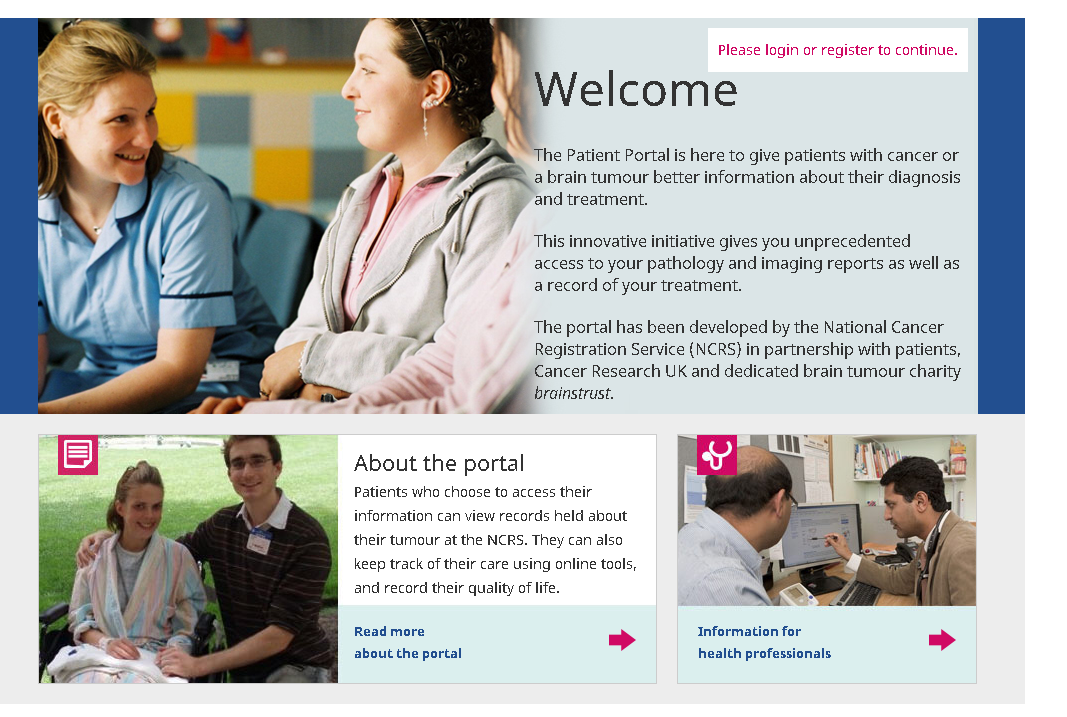
In 2012 you, our brain tumour community, asked for access to your cancer records, information which before was difficult to access.
By working with you, Cancer Research UK, National Cancer Registration Service (NCRS) and healthcare professionals we have been able to develop a portal that can be used by patients to access and engage with their records.
Why the Patient Portal is important
All of our work aims to put you back in control following a diagnosis.
By being able to access your records you will have more space to compute the information that your clinicians would usually just tell you in person. You’ll be able to fully understand what’s happening at your own pace and, by having this control, you’ll be able to have better and clearer conversations with your clinical team, something you’ve told us is of utmost importance to you.
How the Patient Portal works
You can access your tumour records, held by the NCRS, through a special online portal. Here you’ll be able to engage with:
- Tissue sample reports
- Scan reports
- Data on radio and chemotherapy
- Information about hospital attendances and treatment
- Links to treatment options and clinical trials
As we know that a better quality of life often means a better outcome, we’ve also ensured that the portal has a section dedicated to tracking your quality of life during stages of the condition/treatment. And, by integrating quality of life into medical records, we’re making further steps to ensure it’s a priority not just for you, but also health care professionals.
Will Jones, our Director of Development at brainstrust says:
“We know that access to relevant, personalised information is a significant contributing factor to helping people with a brain tumour better understand their situation. This understanding is most important in helping our patients and carers feel less afraid, less isolated and more in control. We are delighted to see the Patient Portal being offered to more people as a result of our expanding collaboration of engaged and committed experts who recognise the significance of information in the battle against cancer. “

Where we are now
The portal has been in development since November 2013, and has been piloted to a number of brain tumour patients across the country, and then extended to other cancer types. The most significant finding of the pilot was that 86% of those who accessed the portal would recommend it to others.
Our plans for the portal were even shortlisted for a Quality in Care Oncology Award in December, and although we didn’t receive the top prize for this work, the project was commended by the judges, with a certificate given to the team on the night.
And just today our Patient Portal poster won first prize at the 2015 NCIN conference.
We’re now currently working on ways to give more patients access to the portal and their records. We’re teaming up with Patients Know Best, in order to integrate NCRS records with this service, so that users can manage all of their medical records in one place.
You can read a more detailed report about the pilot and our next steps on Public Health England’s blog.
We hope soon that every patient will be able to access information about the condition that is changing their life. And we hope that by having access, they can feel more prepared and more in control in the face of diagnosis.








